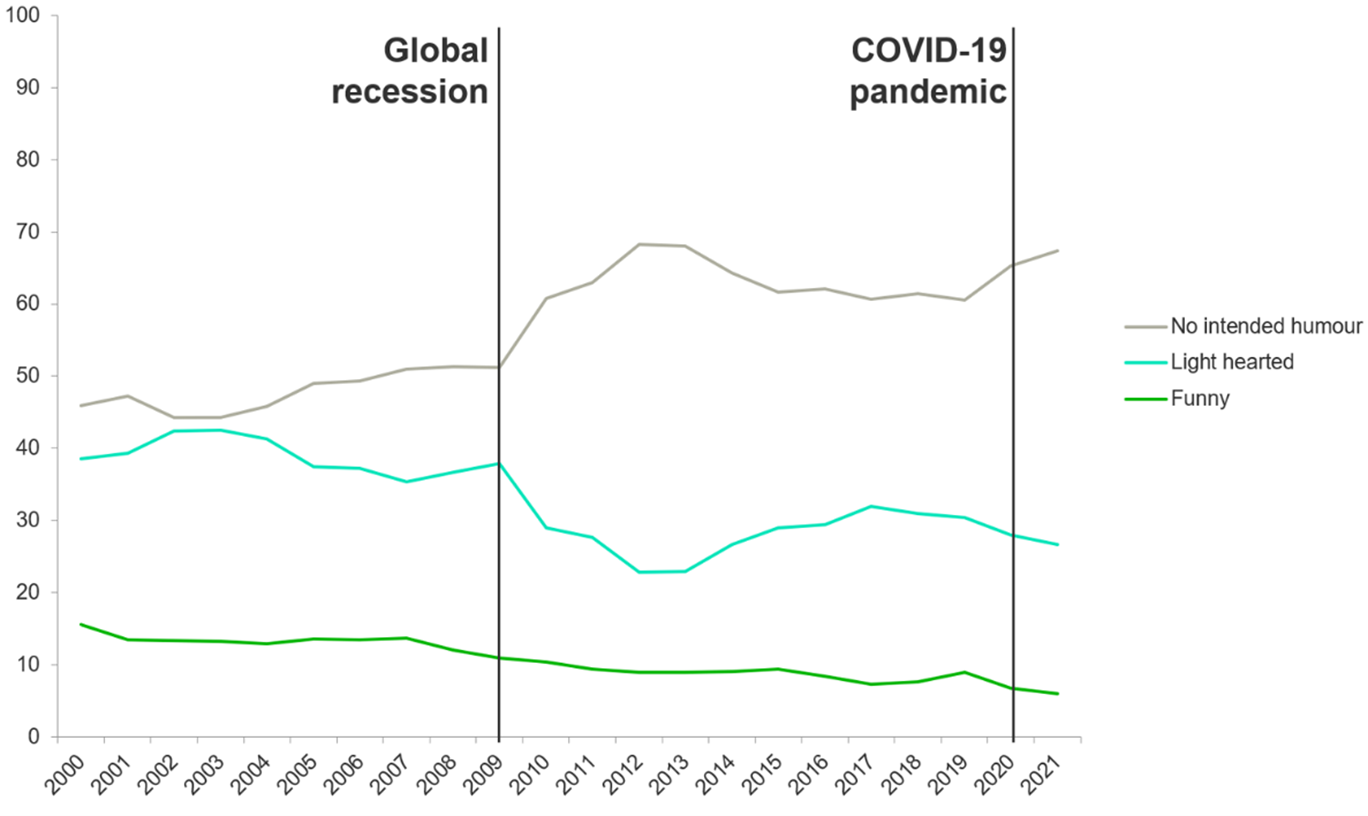How should brands approach the decline of humour in advertising?
Marketing and creative teams employ a variety of tools and tactics to attract and persuade. Humour has long been the clutch of the advertising landscape, with brands producing an endless supply of iconic campaigns with comedy at their core.
And with good reason, as humorous ads have been shown to be more expressive, more inclusive and more distinct. Add to this, “humorous materials are recalled better than non-humorous materials”.
This 2016 article attempts to capture the essence of the effectiveness of humour in advertising, describing the four ways it helps brands build emotional connections with audiences:
- Laughter creates a positive emotional connection to your brand
- Funny content is more memorable
- Humour is a social phenomenon
- Comedy makes brands more relatable
At their core, humorous campaigns, when executed well, positively shape brand favour, have long-lasting recall, are more likely to be shared, and help boost brand authenticity (a critical component in consideration). However, effective execution often is easier said than done. Warren and McGraw’s study of humour in advertising explains:
“To successfully evoke humour, contemporary humour theories suggest that advertisements need to portray something that threatens the target audience’s well-being, identity, or normative belief structure (i.e., a violation) in a way that is simultaneously perceived to be benign. However, it may be difficult to know a priori what the audience will see as a violation and which violations they will see as benign. Successfully creating humorous ads requires a deep understanding of the desires, cultural beliefs, and identity of the target audience. Even then, some humour attempts are bound to fail”
Perhaps these complexities and the somewhat unknown in the pursuit of creating humorous ads plays a part in data which suggests the decline of its implementation in recent years.

In contrast, there remains an audience appetite for humour in advertising, highlighted by findings which suggests that only “one in four people say ads should avoid humour” and given the turbulence of recent years and the trend of purpose led, colloquially coined ‘sadvertising’, perhaps a good laugh is what people need.
Although, there is an ever-growing obligation to ensure the use of such tactics will connect and have the desired impact with audiences. Negative consequences for failed humour attempts such as causing offence, alienating audiences, and harming brand perceptions can feel somewhat heightened in our wholly connected, digital age.
Yet, this compels the cause for more in-depth consideration when attempting humour, rather than complete avoidance. As Winston Churchill once proclaimed, “A joke is a very serious thing”, but the rewards are compelling. Warren and McGraw’s propose five considerations to make when creating comedic content to help campaigns hit the mark.
- Is the humour attempt funny?
- Does the ad create humour in a way that is highly threatening?
- Does the ad create humour by threatening a specific person or group?
- Will the ad create humour in a way that also motivates avoidance?
- What is the context for the humour attempt?
Humour in advertising shouldn’t be feared or shunned. As a tool it has been shown to yield effective results, but thoughtfulness for brand characteristics, evaluation of risk and required effort is essential when aiming to land the right impact.




